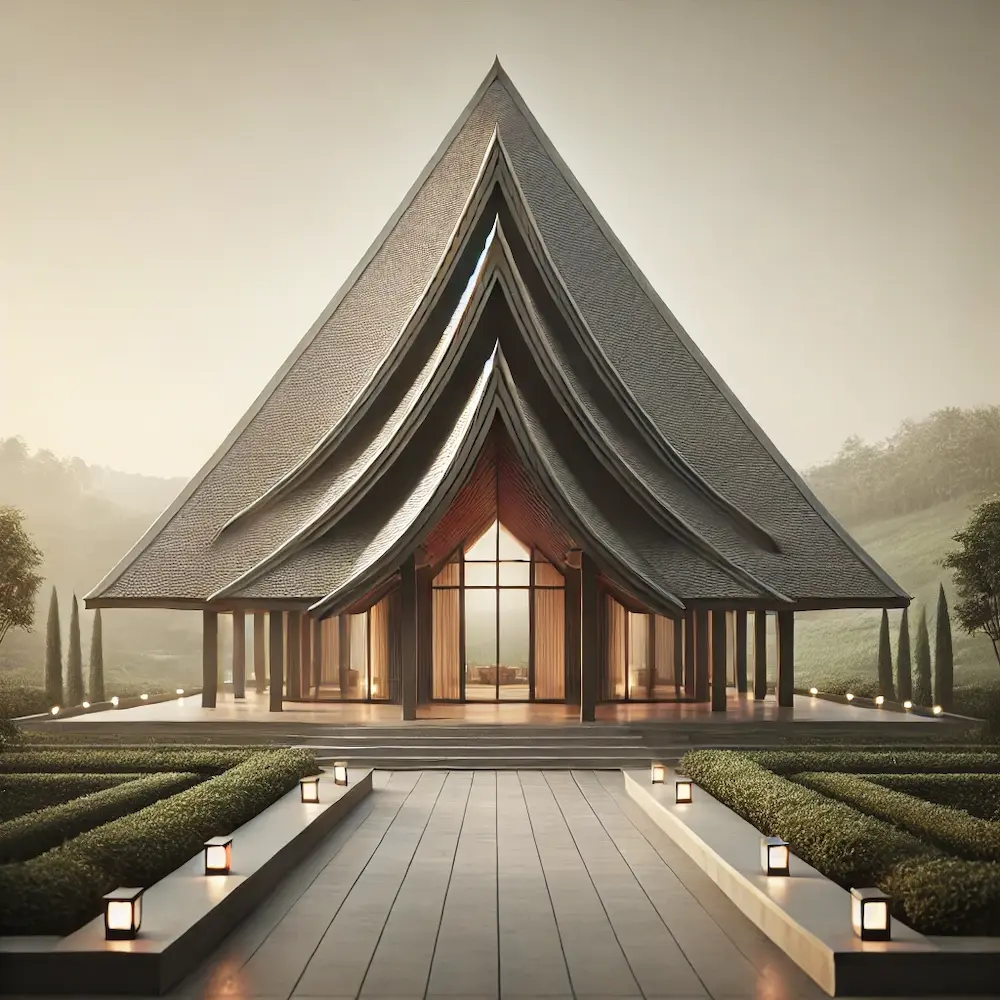A pyramid roof, also known as a pyramidal or pavilion roof, is a type of hip roof where all four sides converge at a single point, forming a pyramid-like shape. This design is prevalent in various architectural styles and is appreciated for its aesthetic appeal and structural benefits.
History and Origins of Pyramid Roofs
The pyramid roof design draws inspiration from ancient structures, notably the pyramids of Egypt, which date back to around 2600 BC. These monumental edifices showcased the durability and timelessness of the pyramid form. In architecture, the pyramid roof has been utilized in various cultures, including Mesoamerican civilizations, where temples and other significant structures featured pyramid-like roofs. Over time, this roofing style has been adapted and integrated into different architectural traditions worldwide.
Key Features of Pyramid Roofs
- Four Sloping Sides: All sides are equal in length and slope downwards, meeting at a single apex.
- No Vertical Ends: Unlike gable roofs, pyramid roofs lack vertical triangle-shaped ends.
- Aerodynamic Shape: The uniform slope on all sides provides excellent resistance to strong winds.
- Efficient Water Drainage: The steep slopes facilitate quick runoff of rainwater and snow, reducing the risk of water accumulation.
Applications of Pyramid Roofs
Pyramid roofs are versatile and can be found in various structures, including:
- Residential Buildings: Common in bungalows, cabins, and cottages, especially in regions prone to high winds or heavy snowfall.
- Gazebos and Pavilions: The symmetrical design is aesthetically pleasing for garden structures.
- Towers and Steeples: Often used in church steeples and other tower-like structures.
- Modern Architecture: Incorporated into contemporary designs for its sleek and minimalist appearance.
Considerations When Choosing Pyramid Roofs
When opting for a pyramid roof, consider the following factors:
- Construction Complexity: Building a pyramid roof requires precise calculations and skilled labor, potentially increasing construction costs.
- Material Selection: Suitable materials include shingles, metal, and tiles, each offering different benefits in terms of durability and aesthetics.
- Space Utilization: The sloping design may limit attic or upper floor space, affecting interior design plans.
- Maintenance: Regular inspections are necessary to ensure the integrity of the roof, especially at the apex where all sides converge.
Conclusion
Pyramid roofs offer a blend of aesthetic appeal and functional benefits, making them a popular choice in various architectural designs. Their historical significance and structural advantages continue to inspire architects and builders, ensuring the pyramid roof remains a timeless architectural feature.
